Our NAB panel of experts discuss tariffs, general economic conditions, and the NAB AUD/USD forecast.

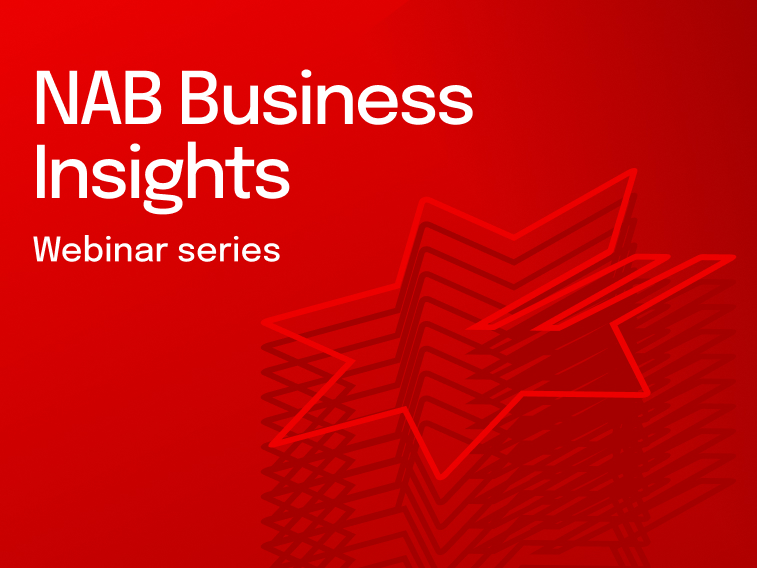
Webinar
There’s an upside to uncertainty – it allows smart businesses to take charge of their destiny by actively managing the things they can control.
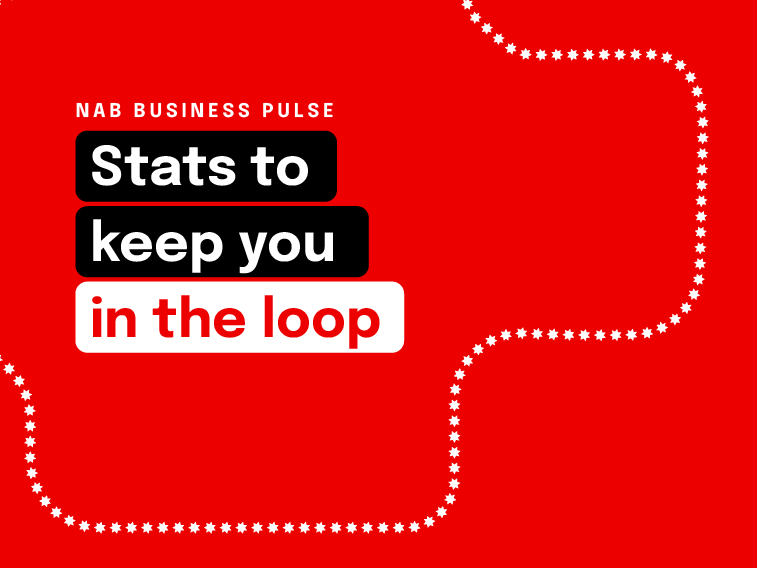
Dealing with risk comes with the territory of doing business, whether that’s for us at NAB or for the customers we help every day. We monitor markets, economic indicators and the geopolitical environment so that we can stay in front of any potential challenges or upsets, and so we can then communicate that knowledge. In business, managing risk looks a bit different – it can involve changing the way you operate, who you work with, or how you plan for the future.
What we’ve learnt is that the most robust businesses are thinking about risk, having conversations with their counterparties and stakeholders, and working with their bankers to manage and control their situation before issues develop.
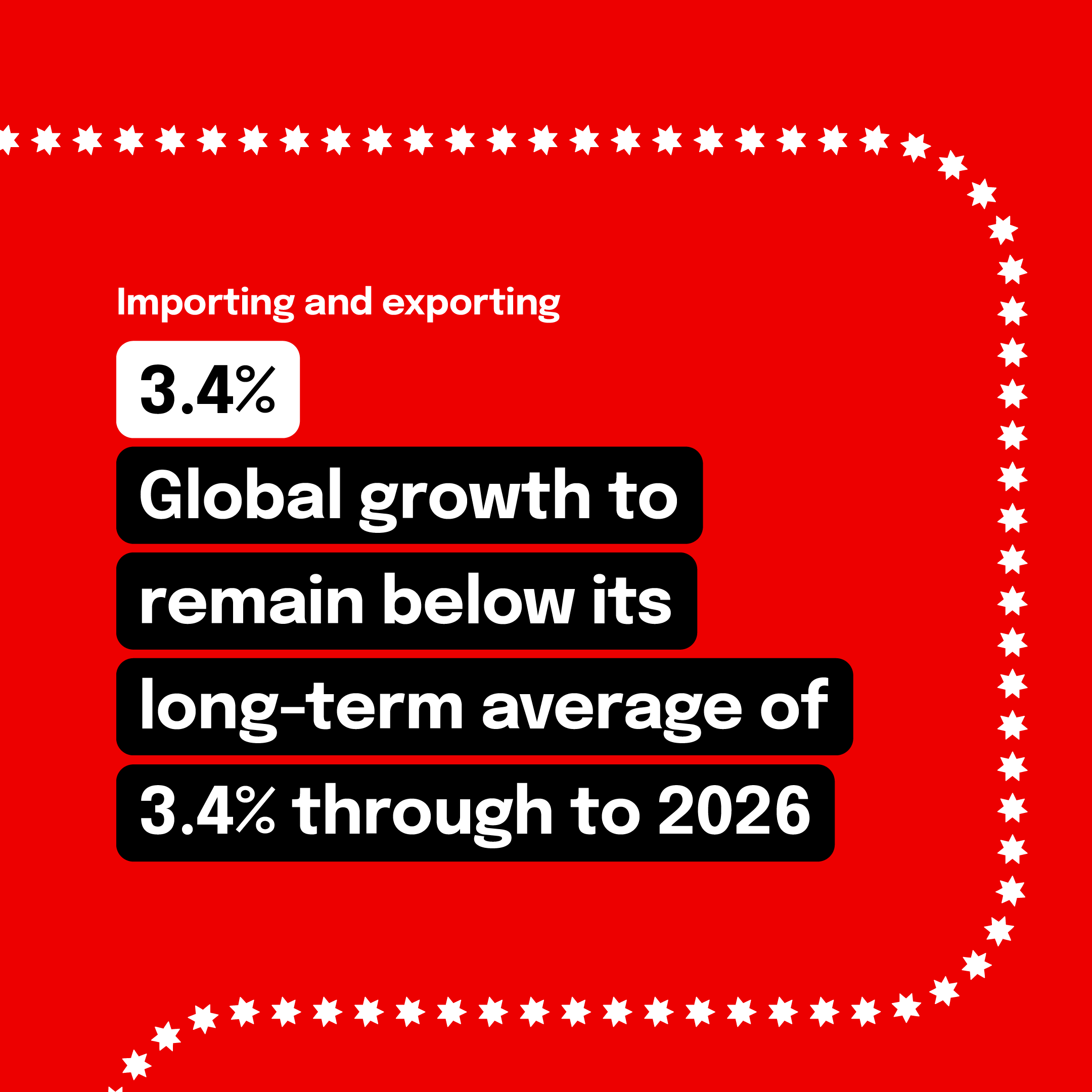
Businesses that import or export are exposed to currency fluctuations on a daily basis, and need to remain conscious of the risks of sudden movements in the strength of the Australian dollar (and the currencies of trading partners). But that’s not to say you should react to the headlines every day. Proactively managing future risks by hedging, using fixed contracts to control costs and exploring other FX strategies can minimise your currency risk under changing circumstances. Your financial markets specialist can also keep you updated on what they’re paying attention to.
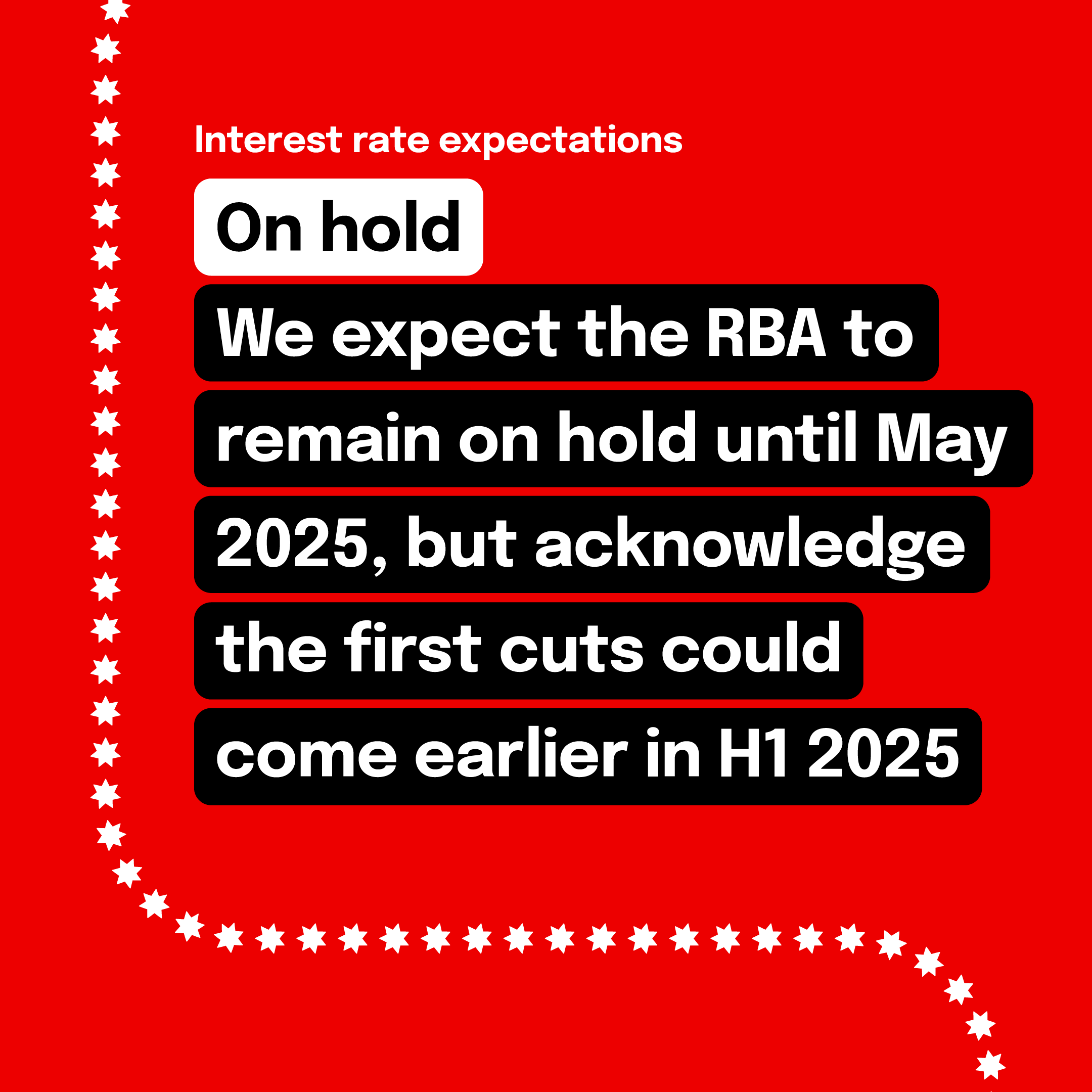
On rates, both the data flow and recent communications from the RBA point to an extended pause, with cuts unlikely to occur this year. We continue to pencil in May 2025 for the first cut, but see all the meetings in H1 2025 as live.
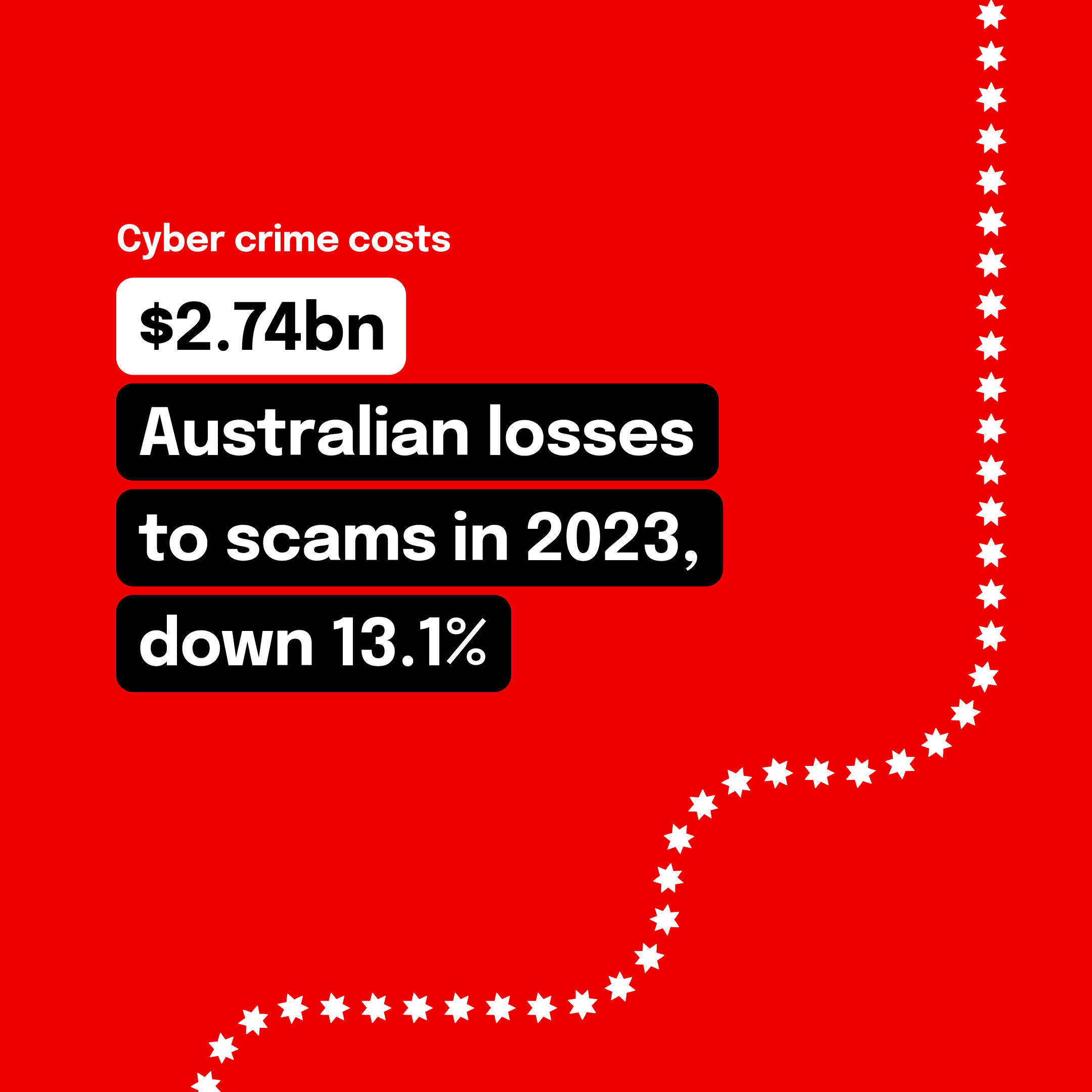
Cyber crime risks come in an ever-growing list of varieties, from scams to fraud to hacking. While much of the attention goes to consumer scams and large corporate breaches, SMEs are as much at risk as anyone. In the 2022-23 financial year, the average cost of cyber crime to small businesses was $46,000, and to medium businesses it was $97,000. Awareness and education, along with digital solutions, have reduced the impact of some types of crime, but others are growing. It’s important that businesses remain abreast of the latest security threats and cyber crime techniques, and adopt a training model that keeps every staff member informed of best practice. Speak to your banker to discuss how they can help or visit nab.com.au/security
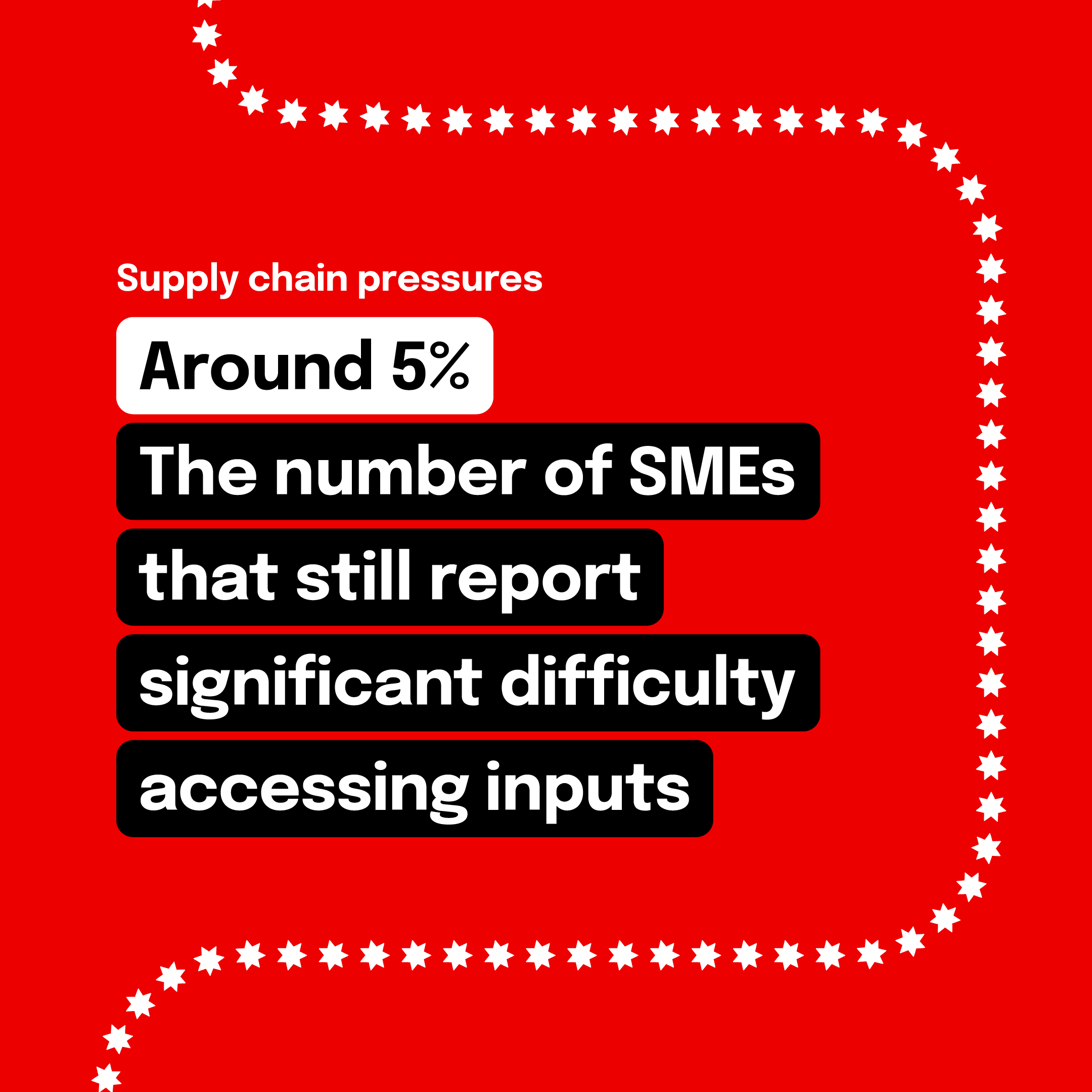
At the 2021 peak of supply chain challenges, around 30% of SMEs were reporting significant constraints around sourcing materials. But in recent NAB surveys, that figure hovers around 5%.
While less common, a missed consignment can have serious implications, so businesses need to conduct due diligence on their suppliers and logistics partners, stay in touch with them about potential disruptions and diversify where possible.
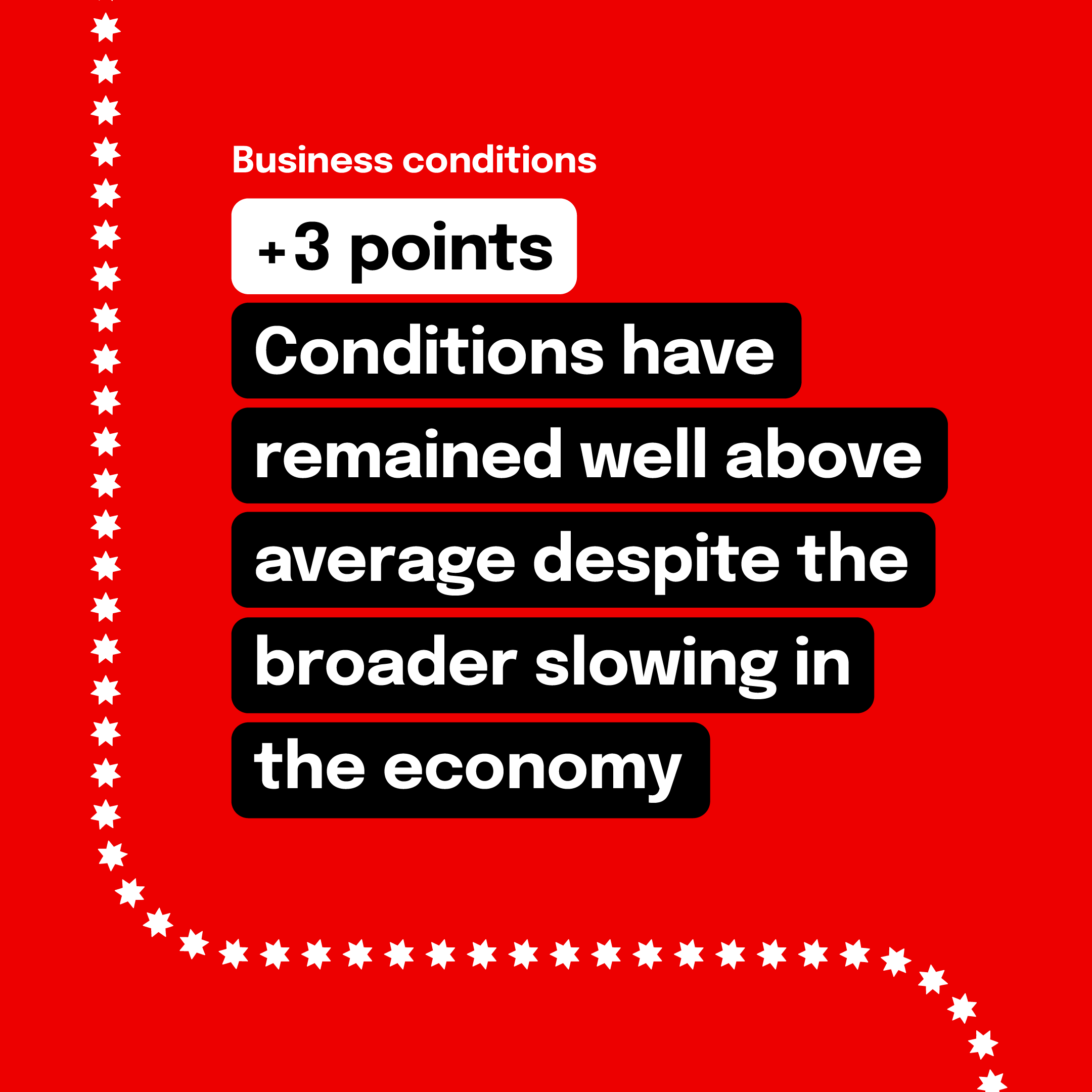
Trading conditions, profitability and employment all rose in August. Capacity utilisation also rose back above 85%. Labour cost growth eased from the spike seen in July but was still elevated at 3.2% in quarterly equivalent terms, while elevated purchase cost growth continued in the month, running at 2.9%.
For individual businesses, that translates to balancing assets and inputs against potentially volatile buyer demand. SMEs can secure their future income by diversifying their product base or adding new lines of business, finding new markets or new buyers and managing their production costs.
As I talk with customers and bankers around Australia, I’m always impressed by stories of how businesses are taking control of their risks – and not only today’s but also emerging ones. One of our manufacturing and importing customers recently received help managing risk from a NAB Markets Adviser.
They, like many Australian businesses, have had to manage rising costs caused by inflation, and to consider how best to manage these costs. Their NAB Markets Adviser supported the company in comparing forecasts and the impact to business, combining expected sales with hedging options over a 12-month period.
Their conversation resulted in a suite of FX products, which provided flexibility while allowing them to control that uncertainty around costs and sales. The company continues to meet with its adviser quarterly, to review its hedge positions and ensure it has the right exposure strategy, as well as being ready to pivot based on changing business and customer requirements and the broader economic environment.
Hearing their story reminded me that managing risk is about having the right systems and structures in place so that you can focus on enjoying what you do best, every day. I’m delighted that many of the businesses NAB works with are doing exactly that with our support.
© National Australia Bank Limited. ABN 12 004 044 937 AFSL and Australian Credit Licence 230686.